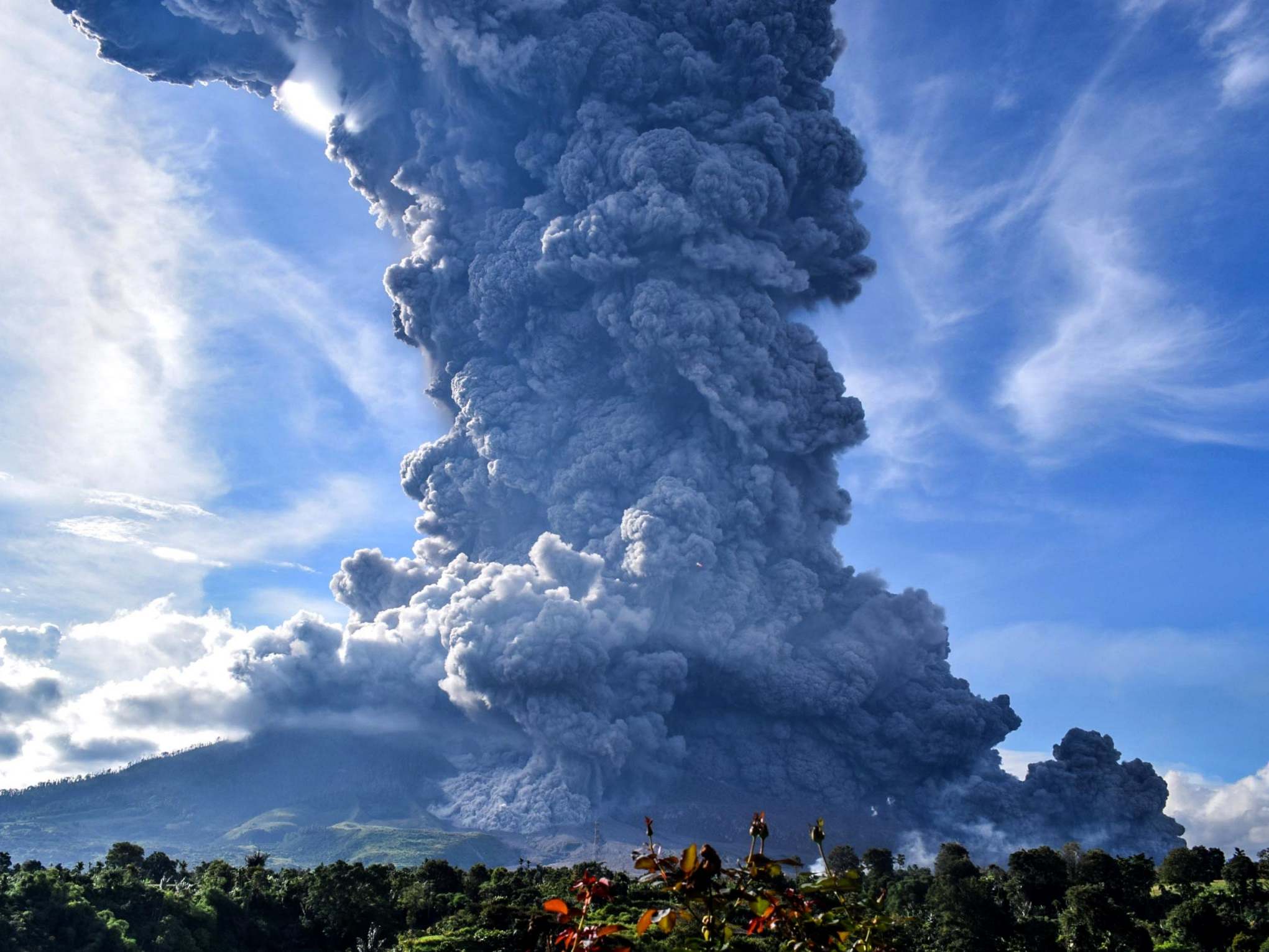Mount Sinabung: Volcano eruption warnings after huge column of ash prompts panic in Indonesia
Explosion causes panic in Sumatra after nine minute blast

A huge column of ash was blasted almost five miles into the sky above the Indonesian island of Sumatra after an active volcano erupted.
Mount Sinabung blew for nine minutes on Sunday, causing panic among the island’s residents.
Indonesian officials warned that further volcanic activity was possible, although the volanco's alert level remained unchanged.
“After the eruption, from midnight until 6 am, there were a few aftershocks,” said Willy, a scientist at a Sinabung observatory.
Residents have been told to stay indoors and to wear face masks, if venturing outside, to protect themselves from volcanic ashfall.
Standing at 2,460m tall, Sinabung was inactive for around 400 years before it erupted in 2010, killing two people.
Since then it has become one of south east Asian nation's most active volcanoes.
More than a dozen people were killed and thousands were forced to flee when it erupted in 2014 and during a February 2018 eruption it released a plume of ash which blew away much of its summit.
The volcanic activity was accompanied by multiple earthquakes felt in nearby villages.

No casualties have been reported in the latest eruption.
Indonesia has nearly 130 active volcanoes, more than any other country.
It is particularly prone to seismic activity due to its location on the “Ring of Fire,” an arc of volcanoes and fault lines encircling the Pacific Basin.
Additional reporting by agencies
Join our commenting forum
Join thought-provoking conversations, follow other Independent readers and see their replies
Comments
Bookmark popover
Removed from bookmarks